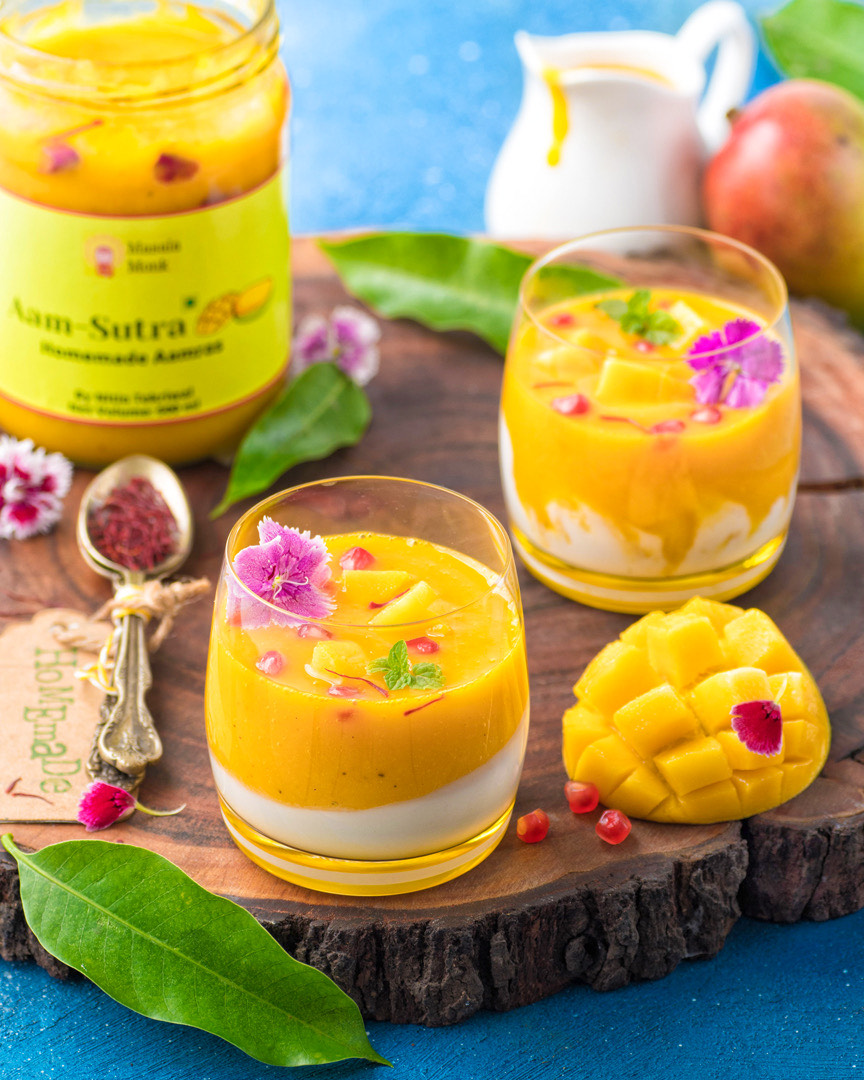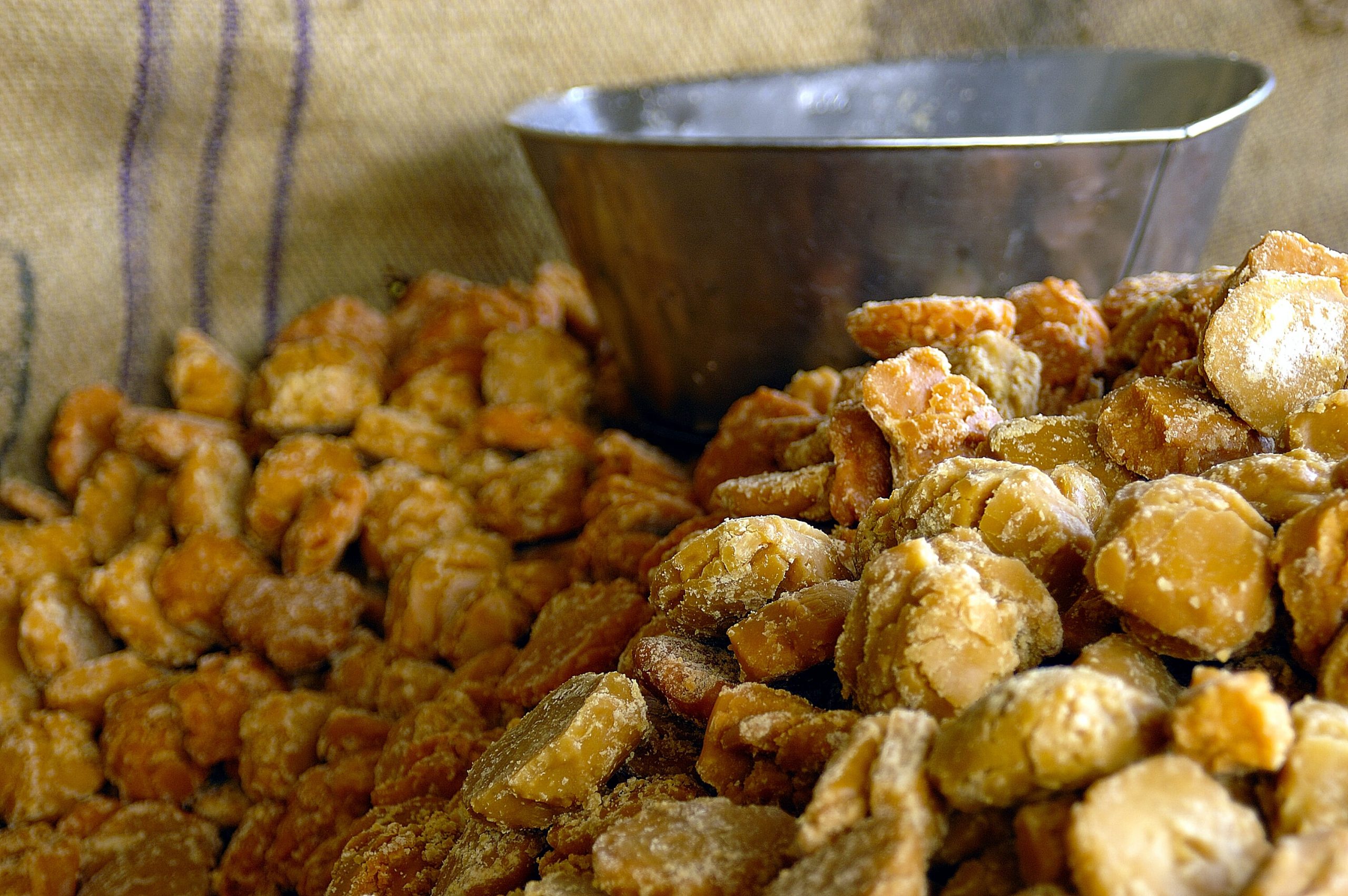
Craving a refreshing and guilt-free dessert? Look no further than 🥭 mango sorbet! Bursting with the vibrant flavors of ripe mangoes, this frozen treat is not only satisfying but also offers a healthier alternative to traditional ice cream. In this post, we’ll dive into the world of mango sorbet, exploring various flavor variations, sugar-free options, and alternative methods for those without an ice cream maker. Let’s embark on this delectable journey together and discover the wonders of mango sorbet! 🍧🤩
The Magic of Mango Sorbet 🪄🥭 Mango sorbet is a fantastic choice for those who desire a lighter, dairy-free dessert. Made with pureed mangoes, it provides a luscious and creamy texture without relying on heavy creams or milk. The natural sweetness of ripe mangoes contributes to its flavor profile, making it an absolute delight for your taste buds. 😋✨
Creating the Perfect Mango Sorbet 🧪🥭 To make a basic mango sorbet, you’ll need four ripe mangoes, one cup of sugar, one cup of water, and the juice of one lemon. However, for those seeking to reduce or eliminate sugar, there are alternatives to consider. 🚫🍬
Sugar-Free and Healthier Options 🌱🍯 If you prefer a sugar-free version of mango sorbet, you can substitute the sugar with natural sweeteners like stevia, erythritol, or monk fruit. These alternatives provide sweetness without the added calories or impact on blood sugar levels. Start with a smaller amount of sweetener and adjust to taste, as the sweetness of mangoes can vary. 🌟
Moreover, you can replace sugar with healthier ingredients such as ripe bananas or dates. These natural sweeteners not only add sweetness but also provide essential nutrients and fiber. Simply blend the mangoes with a ripe banana or soaked and pureed dates for a delectable and wholesome treat. 🍌🌿🍯
Alternative Methods for Making Mango Sorbet 🥭🍨 Don’t worry if you don’t have an ice cream maker! You can still enjoy homemade mango sorbet using alternative methods. Here are two popular options:
- Blender Method 🥣🌀 If you don’t have an ice cream maker, you can use a blender to achieve a smooth consistency. After blending the mangoes with the other ingredients, transfer the mixture into a shallow, freezer-safe dish. Place the dish in the freezer and, every 30 minutes, use a fork to vigorously stir and break up any ice crystals that form. Repeat this process until the sorbet reaches the desired consistency. This method may take a bit more effort but yields excellent results. 🍨🧊✨
- Popsicle or Ice Cube Tray Method 🍦🌈 Another option is to pour the mango sorbet mixture into popsicle molds or ice cube trays. Freeze them until solid, and voila! You’ll have delightful mango sorbet popsicles or bite-sized sorbet cubes. These frozen treats are perfect for a quick, refreshing snack on a hot summer day. ☀️🍡
Unleashing Flavorful Variations 🎉🌈🍨 Now, let’s explore some tantalizing flavor variations for your mango sorbet:
- Mango-Chili Sorbet 🌶️🥭🔥:
- The combination of sweet mangoes and spicy chili creates a tantalizing contrast of flavors.
- Start with a teaspoon of chili powder or a finely chopped jalapeno, and add it to the blender along with the other ingredients.
- Adjust the amount of chili to suit your spice preference, and don’t be afraid to experiment with different types of chili for unique heat profiles.
- The gentle heat of the chili perfectly complements the sweetness of the mango, creating a sorbet that is both refreshing and fiery.
- Mango-Basil Sorbet 🌿🥭🍃:
- Adding fresh basil leaves to your mango sorbet introduces an unexpected and delightful herbal twist.
- Take a handful of fresh basil leaves and blend them along with the mangoes and other ingredients.
- The aromatic and slightly peppery notes of basil beautifully balance the sweetness of the mango, creating a sophisticated flavor combination.
- The result is a refreshing sorbet with a hint of herbaceous goodness that will leave your taste buds craving for more.
- Mango-Coconut Sorbet 🥥🌴🥭:
- If you’re a fan of tropical flavors, this variation will transport you to a paradise of taste.
- Replace the water in the recipe with coconut water to infuse your sorbet with a subtle hint of coconut.
- Additionally, add half a cup of coconut cream to enhance the creamy texture and intensify the coconut flavor.
- The combination of mango and coconut creates a harmonious blend of flavors that will remind you of a sunny beach getaway.
- Mango-Lime Sorbet 🍈🥭🍋:
- By substituting the lemon juice with lime juice, you’ll give your mango sorbet a tangy and citrusy twist.
- Squeeze the juice of two limes into the blender along with the other ingredients.
- The vibrant acidity of lime adds a refreshing and zesty element to the sorbet, creating a perfect balance of sweet and sour.
- The bright and invigorating flavors of mango and lime will make your taste buds dance with joy.
- Mango-Ginger Sorbet 🥭🍊🧡:
- The addition of ginger adds a warm and spicy kick to your mango sorbet, making it a truly invigorating treat.
- Grate about a tablespoon of fresh ginger and add it to the blender with the other ingredients.
- Ginger brings a subtle heat and earthiness that pairs exceptionally well with the tropical sweetness of mango.
- The combination of mango and ginger provides a delightful sensory experience, with each spoonful offering a burst of flavors.
Remember to taste as you go and adjust the flavorings according to your preferences. These variations allow you to personalize your mango sorbet and create a unique dessert experience. So let your taste buds guide you, experiment with different combinations, and enjoy the marvelous world of mango sorbet! 🍨✨
The key to a remarkable mango sorbet lies in using ripe and flavorful mangoes. If fresh mangoes are not available, you can use frozen mango chunks, which are often just as delicious and convenient. 🥭❄️
Now that you’re armed with the knowledge of how to make mango sorbet, along with sugar-free options and alternative methods for those without an ice cream maker, it’s time to embark on your sorbet-making adventure. Let your creativity run wild with flavor combinations, and enjoy the delightful, guilt-free indulgence that mango sorbet offers. Treat yourself to a taste of summer and savor every spoonful of this refreshing dessert! 🌞🍨🌴










